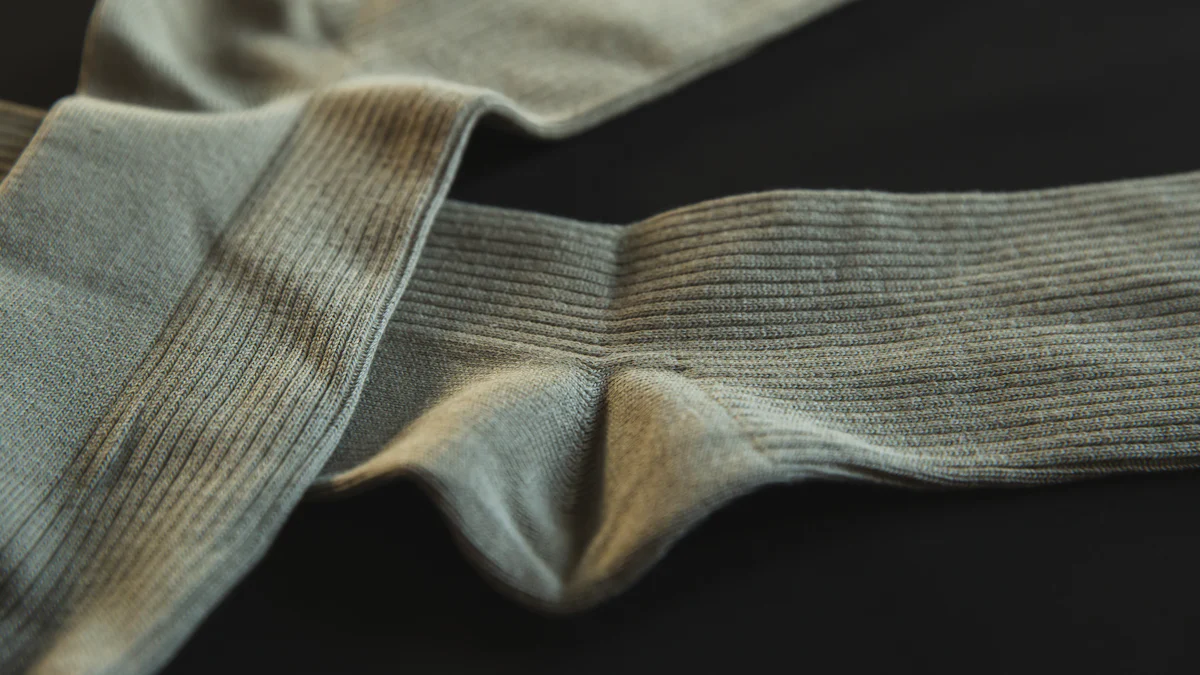
Embracing the Great Outdoors: A Sock Dilemma
When it comes to outdoor activities, your choice of socks can make a significant difference in your overall experience. Comfort and performance on the trail are directly impacted by the type of socks you wear. Additionally, the impact of socks on foot health cannot be overstated, as they play a crucial role in preventing blisters and providing adequate support.
Now, let’s set the stage by delving into the timeless debate of wool vs cotton socks. Each material offers distinct characteristics that cater to different needs and preferences.
Setting the Stage: Wool vs Cotton Socks
A Brief Overview of Each Material
- Wool: Known for its moisture-wicking properties and natural insulation, wool socks are favored for outdoor activities.
- Cotton: While comfortable and breathable, cotton socks may not be the best choice for prolonged outdoor adventures due to their moisture-absorbing nature.
The Battle of the Fibers: Wool vs Cotton Socks
Absorption and Moisture Management
When it comes to wool vs cotton socks, one crucial factor to consider is their absorption and moisture management properties. Wool excels in keeping you dry during outdoor activities. Its natural moisture-wicking abilities allow it to absorb up to 30% of its weight in moisture before feeling damp, making it an ideal choice for prolonged adventures. On the other hand, cotton may not be the best option in wet conditions, as it tends to retain moisture, leading to a clammy sensation that can be uncomfortable during outdoor pursuits.
Temperature Regulation and Comfort
In the battle of wool vs cotton socks, temperature regulation and comfort play a significant role. Wool boasts natural insulating properties that help keep your feet warm in cold weather while also providing breathability for comfort during warmer temperatures. Conversely, cotton has limitations when it comes to adapting to varying temperatures, potentially causing discomfort during extended outdoor activities.
Durability and Longevity
Considering durability and longevity, wool socks stand out for their robust nature. They are known for their ability to withstand wear and tear over time, making them a reliable choice for frequent outdoor enthusiasts. On the other hand, cotton socks may experience deterioration more quickly due to their tendency to lose shape and structure with prolonged use.
My Personal Journey with Wool and Cotton Socks
As an avid outdoor enthusiast, my journey with wool and cotton socks has been a tale of discovery and transformation. Let me take you through my initial impressions and experiences with both types of socks, along with the real-life lessons I’ve learned on the trail.
Initial Impressions and Experiences
My First Hike with Cotton Socks
I vividly remember my first hiking experience wearing cotton socks. The initial comfort they provided was undeniable, and I set off on the trail with high hopes. However, as the day progressed, I began to feel the effects of moisture retention. The cotton socks absorbed sweat, leaving my feet feeling damp and uncomfortable. It became clear that prolonged outdoor activities demanded more than just initial comfort; they required moisture management for long-lasting performance.
The Game-Changing Moment with Wool
My perspective shifted dramatically when I decided to give wool socks a try. On my first hike wearing wool socks, I immediately noticed the difference. Despite sweating during challenging uphill climbs, my feet remained remarkably dry and comfortable throughout the journey. The moisture-wicking properties of wool proved to be a game-changer, enhancing my overall hiking experience.
Real-Life Lessons Learned on the Trail
The Importance of Proper Sock Selection
Through trial and error, I learned firsthand the critical role that proper sock selection plays in outdoor pursuits. It’s not just about finding socks that feel good initially; it’s about choosing socks that can maintain comfort and performance over extended periods.
How Wool Socks Changed My Outdoor Adventures
The introduction of wool socks into my outdoor gear arsenal marked a significant turning point. They allowed me to fully immerse myself in nature without being hindered by discomfort or moisture-related issues. From challenging hikes to leisurely camping trips, wool socks have consistently provided the reliability and comfort needed to elevate my outdoor adventures.
Making the Right Choice for Your Feet
When it comes to choosing the right socks for your outdoor adventures, several factors should guide your decision. Understanding these considerations can significantly enhance your overall comfort and performance while exploring the great outdoors.
Factors to Consider When Choosing Socks
Activity Type and Weather Conditions
The type of outdoor activity you engage in and the prevailing weather conditions play a pivotal role in sock selection. For rigorous activities like hiking or backpacking, wool socks are often preferred due to their moisture-wicking properties and insulation. In contrast, cotton socks may be suitable for less demanding activities in dry weather conditions.
Personal Comfort and Preferences
Consider your personal comfort needs and preferences when selecting socks for outdoor endeavors. Some individuals prioritize breathability, while others seek enhanced warmth and cushioning. Understanding your unique comfort requirements will help you make an informed choice between wool and cotton socks.
My Recommendations for Ultimate Outdoor Comfort
Why I Lean Towards Wool Socks
Having experienced the transformative benefits of wool socks firsthand, I lean towards them for ultimate outdoor comfort. Their exceptional moisture-wicking capabilities, temperature regulation, and durability make them a reliable choice for various outdoor pursuits.
Situations Where Cotton Might Still Shine
While wool socks excel in most outdoor scenarios, there are instances where cotton socks might still shine. In casual, low-intensity activities during dry weather, cotton socks can offer adequate breathability and initial comfort.
In summary, prioritizing functionality over fashion when choosing between wool and cotton socks is crucial for ensuring a comfortable and enjoyable outdoor experience.

